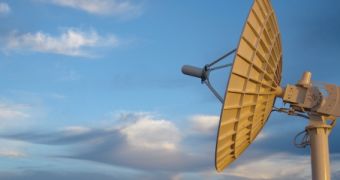As work on the European Space Agency's (ESA) Galileo satellite navigation system accelerates, the organization is also supporting efforts to improve its infrastructure on the ground. To this end, the agency has recently inaugurated a new Galileo Sensor Station in the middle of the Atlantic Ocean. The facility is located on the Santa Maria island in the Azores, which belongs to Portugal.
ESA operates multiple tracking and relay stations around the world. The Santa Maria site was already in use before the new installation was constructed, as engineers were harnessing the power of an existing ESA Estrack station here to monitor spacecraft launched from the Kourou Spaceport in French Guiana, South America.
With a series of new investments, the site got a new, 50-centimeter (20-inch) omnidirectional antenna, a new power plant, a guard house, and a couple of smaller VSAT satellite antennas. These assets allow it to easily connect to, and keep in touch with, the rest of the Galileo Ground Segment worldwide.
Europe has already launched four satellites from its Galileo navigation and positioning system, which is meant to be an alternative to the Global Positioning System (GPS) built and operated by the United States. Several new spacecraft are scheduled for launch in 2014, since ESA targets the end of this year as the time to begin initial services with its new satellite constellation.
The purpose of the ground stations is to monitor the quality of signals sent back to Earth by the orbital assets, to ensure proper clock timings between spacecraft, and to control the accurate positioning of all satellites with respect to Earth. The latest facility was opened on March 26 in the presence of Vitor Fraga, the Regional Secretary of Tourism and Transport in the Azore.
Joining him was the Manager of Galileo Ground Segment Procurement at ESA, Syvain Loddo. The facility is located around 1,500 kilometers (932 miles) from mainland Portugal and sits on a very small and mountainous island. The ESA Estrack station already present on the island is known among the locals as Montes das Flores (Hill of Flowers).
An important thing to mention is that Galileo is part of the international COSPAS–SARSAT emergency location system, which surveys UHF signals for signs of distress. As part of the effort to seamlessly integrate the new constellation with this critical system, the new Azores site will later this year hold a reference beacon. This asset will help existing Galileo satellites fine-tune their capabilities.
COSPAS–SARSAT works by picking up emergency UHF beacon signals from ships, aircraft, or individuals in distress (such as mountaineers caught in an avalanche), and relaying them for to the nearest, most relevant national emergency service. This quick reaction time has already proven critical for saving dozens of lives.

 14 DAY TRIAL //
14 DAY TRIAL //